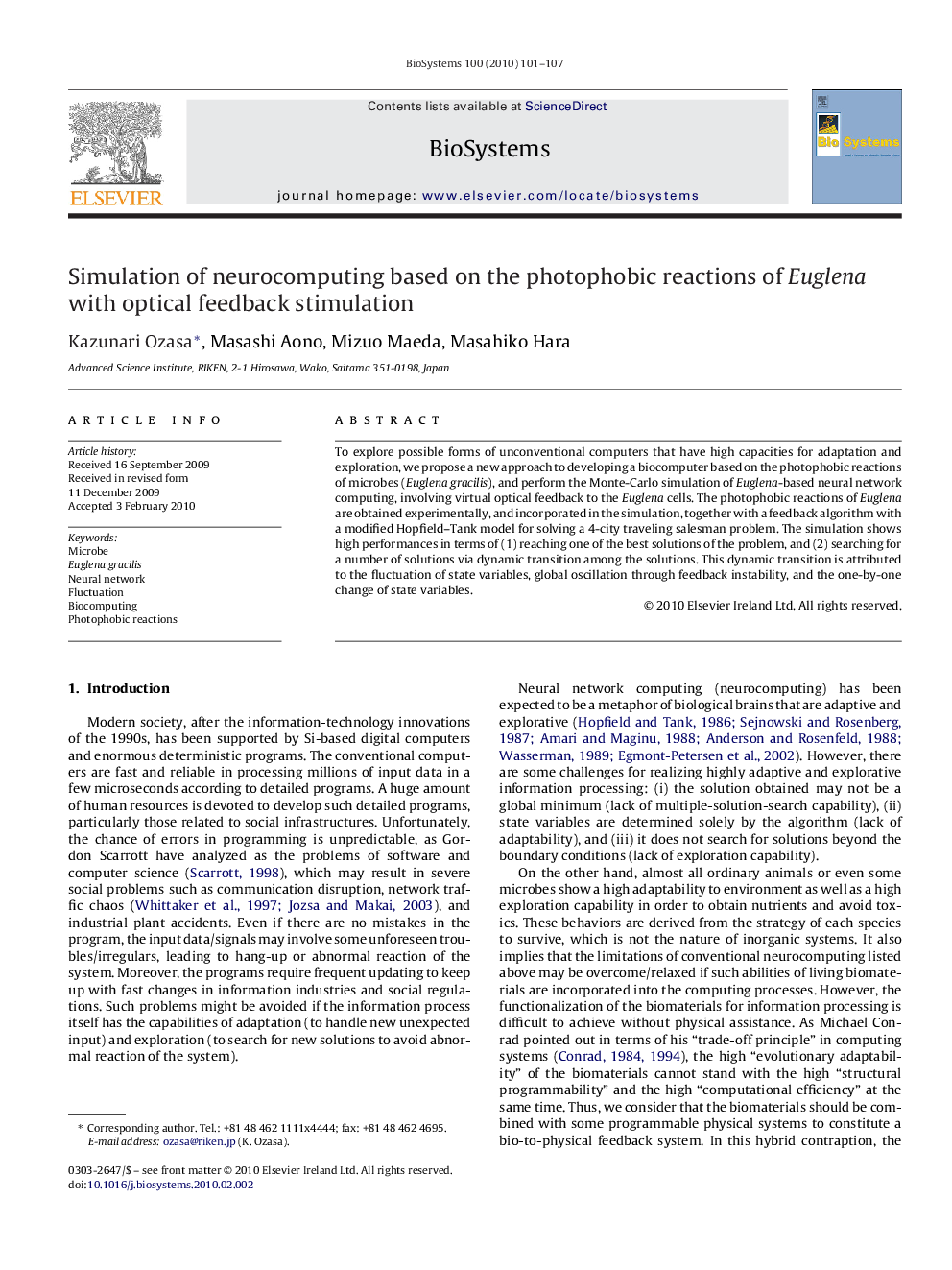| Article ID | Journal | Published Year | Pages | File Type |
|---|---|---|---|---|
| 2076393 | Biosystems | 2010 | 7 Pages |
Abstract
To explore possible forms of unconventional computers that have high capacities for adaptation and exploration, we propose a new approach to developing a biocomputer based on the photophobic reactions of microbes (Euglena gracilis), and perform the Monte-Carlo simulation of Euglena-based neural network computing, involving virtual optical feedback to the Euglena cells. The photophobic reactions of Euglena are obtained experimentally, and incorporated in the simulation, together with a feedback algorithm with a modified Hopfield-Tank model for solving a 4-city traveling salesman problem. The simulation shows high performances in terms of (1) reaching one of the best solutions of the problem, and (2) searching for a number of solutions via dynamic transition among the solutions. This dynamic transition is attributed to the fluctuation of state variables, global oscillation through feedback instability, and the one-by-one change of state variables.
Related Topics
Physical Sciences and Engineering
Mathematics
Modelling and Simulation
Authors
Kazunari Ozasa, Masashi Aono, Mizuo Maeda, Masahiko Hara,
